
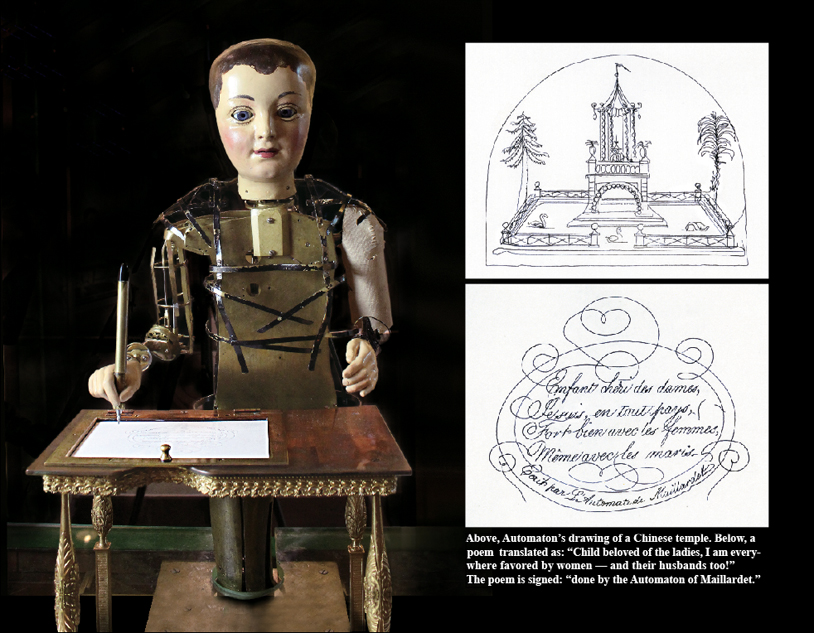

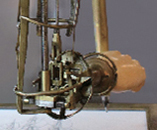
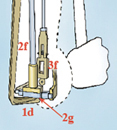

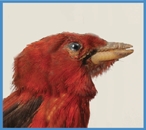
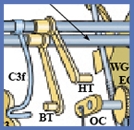


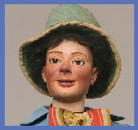


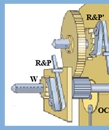
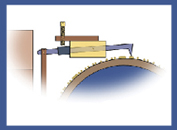
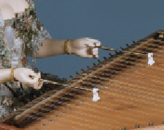
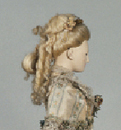
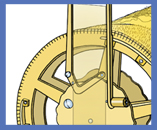
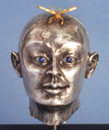

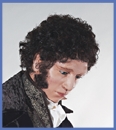

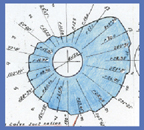

Clockwork Automata: During the Golden Age of automata, mainly the 17th through the 19th Centuries, most automata were operated by clockwork.
Strong mainsprings turned the gears, cams and linkages created movement.
These automata were mostly figurative, and imitated quite realistically the movements of humans and animals…and some animals acting like humans.
Most of these beautifully crafted masterpieces were made in France, many were also made in Germany.
Some were made as mechanical figures for clock towers, but as more and more fabrication shops opened, automata were made for collectors:
The simpler automata of that time were intended as “jouets,” or elaborate and lovely toys, manufactured in quantity from proprietary designs, and bought by the newly prosperous middle class,
the wealthy bourgeoisie, to delight their children and guests.
The far more complicated “one off” pieces, like the works by Jacques Vaucanson, and later, Henri Maillardet, were toured widely, sometimes all over Europe, Russia, the United Kingdom, and the United States.
They were exhibited to crowds of admiring and amazed viewers who paid to see these “androids” performing actions nearly identical to those of a real human being. With charm, verve and aplomb they did tricks, played musical instruments,
drew pictures and wrote poems.
Historically, automaton builders were notoriously secretive.
Automaton studios, ateliers and factories often hid the mechanisms of the pieces they sold to the public by sealing them into the heads and bodies of the figures,
so that access to them was possible only by forcibly breaking into the bodies and the backs of the skulls.
Patent drawings were rarely submitted, and when they were, they were incomplete and tended to misguide the viewer. It is nearly impossible to obtain patent drawings for any but the simpler sort of figure.
Every effort was made to conceal the mechanisms of these pieces. The mechanical movements were hidden within pedestals or sealed into the bodies; beautiful costumes and elaborate wigs covered the linkages in the bodies and heads.
So it is small wonder that to date, there have been no detailed analyses, technical drawings, or explanations as to how most of these automata functioned.
This book aims to remedy this lack. While it would be impossible, in the space of the book, to offer detailed explanations of every kind of mechanism, several interesting ones are covered here,
and they solve the problems of mechanical movement in fascinating ways.
The six Golden Age antique automata covered in Figures in the Fourth Dimension come from three main sources.
The Morris Museum in Morristown New Jersey, home of the world-famous Guinness Collection, offered the Flower Seller and Pig and Peasant, by Gustave Vichy;
the Flutist, by Nicolas Theroude; and a
Singing Bird automaton by Blaise Bontems.
The Museum's conservator, Jere Ryder, provided beautiful photographs of the pieces, explained their mechanisms and corrected my drawings.
The Franklin Institute in Philadelphia, Pennsylvania, allowed my to photograph the boy poet and draughtsman Automaton by Henri Maillardet, and its conservator,
Charles Penniman, helped immensely with the photography, and provided me with a detailed explanation of its movements.
We corresponded for months analyzing my drawings and preparing the explanatory text. The Musée des Arts et Métiers in Paris, France, and its conservator, Jean-Luc Chazoule,
sent me lovely photographs of its prize automaton, La Joueuse de Tympanon, or the Hammer Dulcimer Player, by David Roentgen and Peter Kintzing, and he and Jere Ryder helped me do the technical drawings and explain the movements.
This exquisite sculpture is said to be a portrait of Queen Marie Antoinette, and was given to her by her husband, King Louis XVI, only a few years before they were both executed during the French Revolution.
It was donated o the Institute of Sciences, and it escaped damage during the turmoil of the succeeding years.
Two other clockwork automata are modern. Vespa, by Steven Parker and Anthony Lent is a prize-winning silver sculpture of a head whose eyes move in every direction
as it looks for the sound of a wasp buzzing on its cranium. World-famous "automatier" François Junod sent pictures and technical drawings for his Pushkin, a poet "ecrivain"
android who can write over a thousand different short poems, and whose extremely complex mechanism was inspired by the famous Jacquet-Droz writing android of the 19th Century.
The pictures: The Maillardet Automaton: photo of the figure and a poem and drawing. Photo of the whole mechanism taken from above.
Photo and technical drawing of the mechanisms controlling the right hand. Bontem's
Three Birds in a Cage,
and technical drawing of the mechanism producing the bird's song and movement. Vichy's Flower Seller and technical drawing of its entire mechanism.
Pig and Peasant and technical drawing of its mechanism. Theroude's Flutist,
photos of front and back views, technical drawing of the whole mechanism, and section drawing of the musical barrel, linkages, and bellows attachments.
Roentgen and Kintzing's Joueuse de Tympanon, photo of the displayed piece,
the piece undressed so we can see the mechanism, and a drawing of the main gears and musical barrel.
Parker and Lent's Vespa, photos of the head, the mechanism of the piece, and drawings of various parts of the mechanism. Junod's Pushkin,
photo of the android, photo of the mechanism from the back, and two technical drawings for individual parts of this very complex mechanism.
Additional drawings can be found for the Junod's
Pushkin page in the Supplementary Materials section.